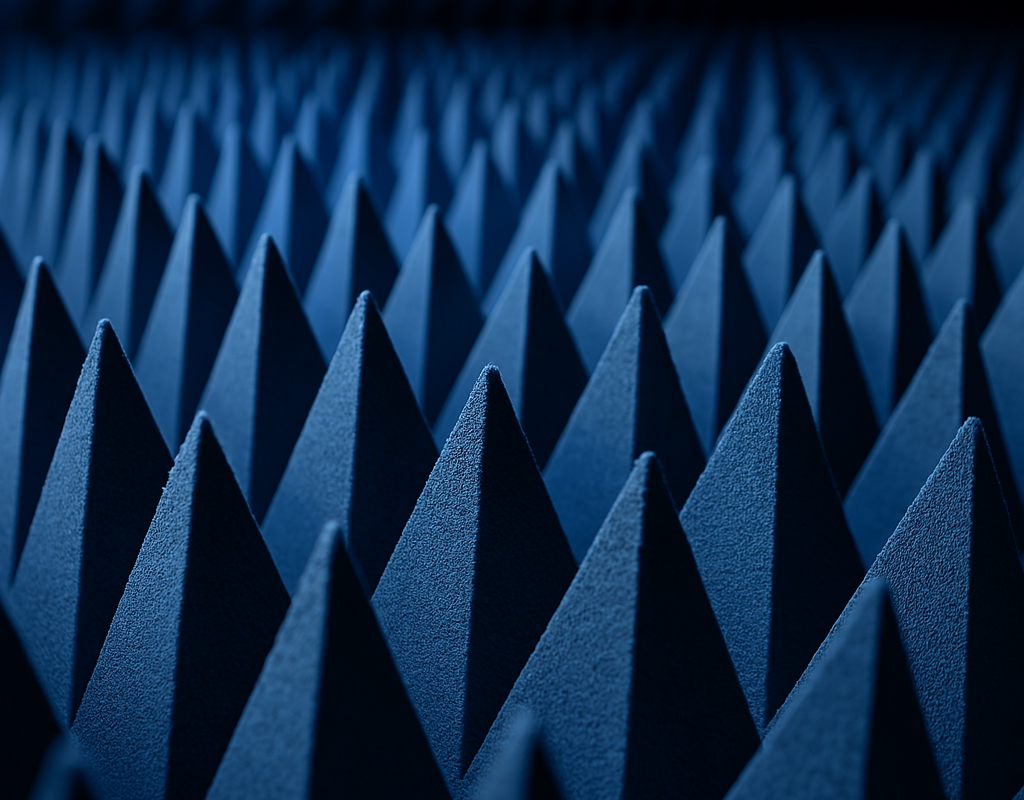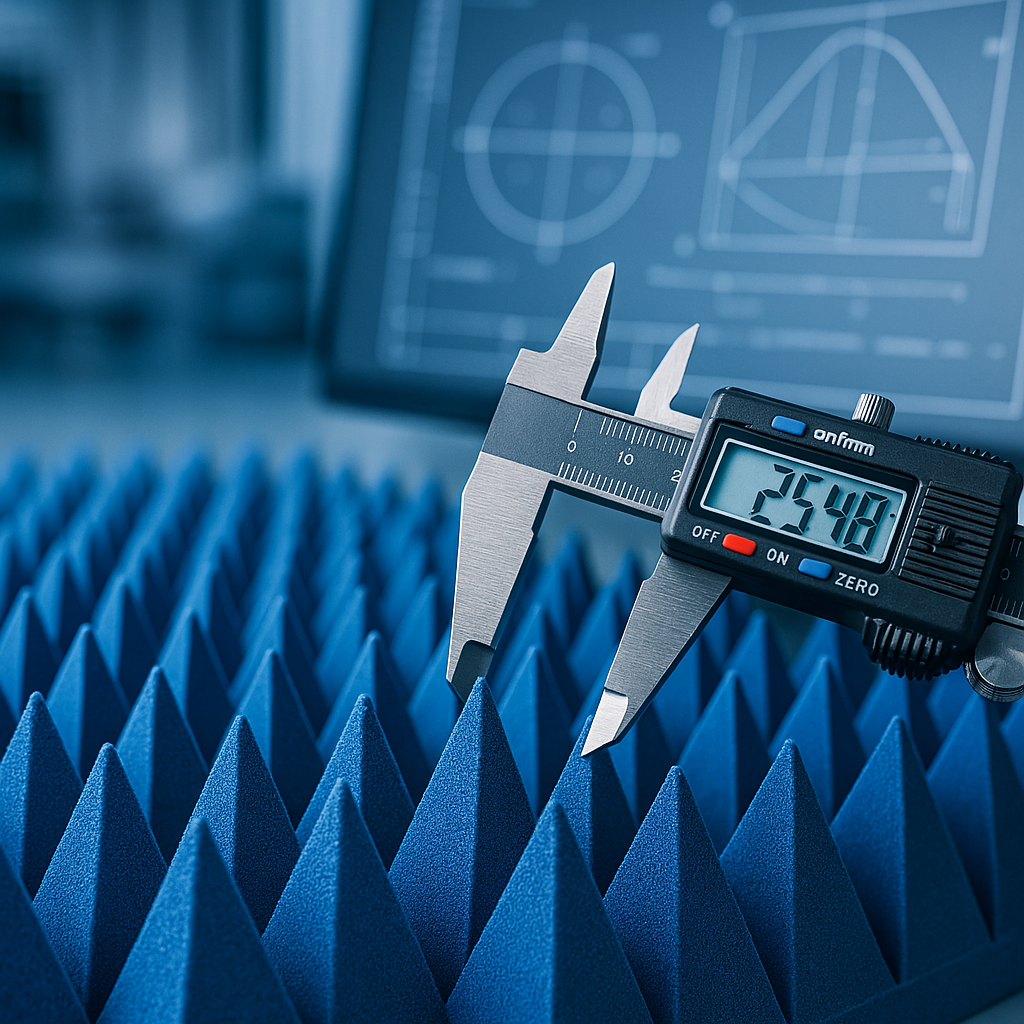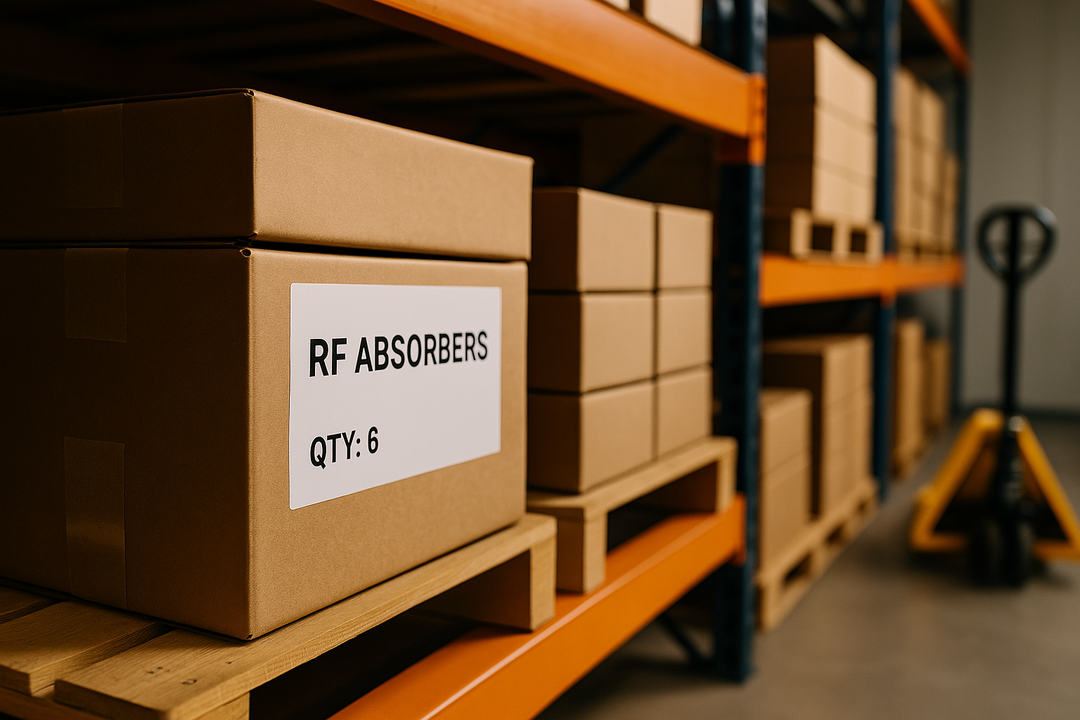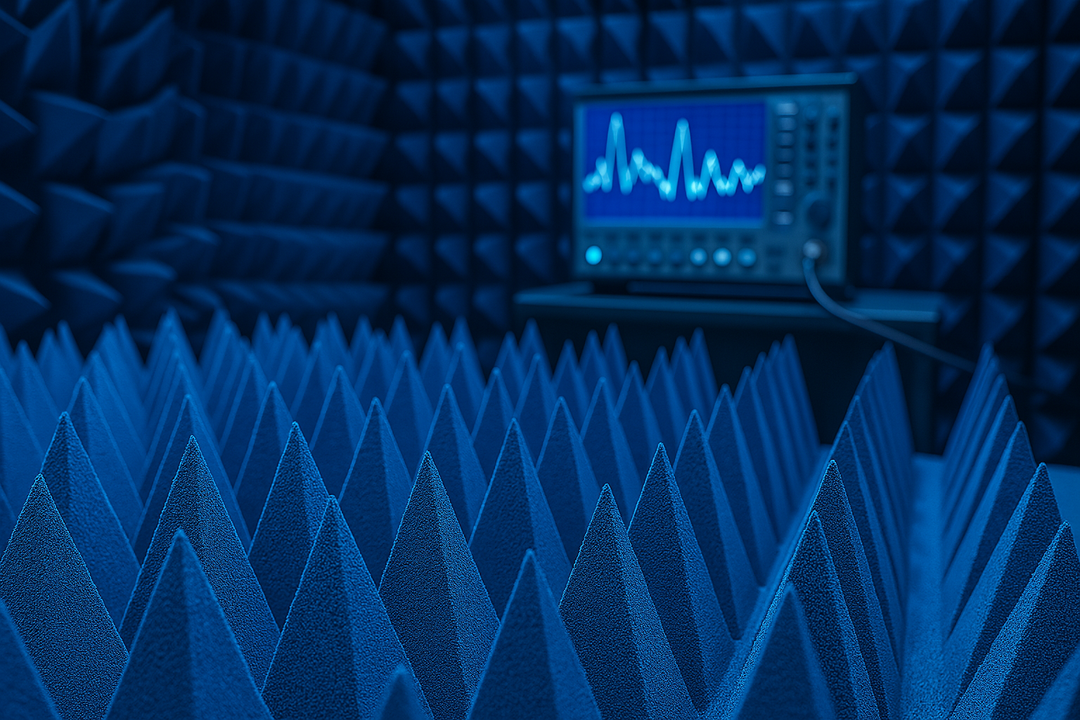How Effective Are Pyramidal Absorbers in Minimizing Microwave Reflection?

How Effective Are Pyramidal Absorbers in Minimizing Microwave Reflection?
In RF and microwave testing, precise measurement is essential for ensuring optimal communication systems and electronic device performance. One critical component in achieving accurate results is minimizing microwave reflection, which can distort readings and lead to inefficiencies. This article provides a comprehensive understanding of how pyramidal absorbers work, their effectiveness in reducing microwave reflection, and their crucial role in enhancing the accuracy of RF and microwave testing environments.
Pyramidal Absorbers in Different Testing Environments
Pyramid-shaped absorbers are specialized materials used in RF and microwave testing environments to absorb electromagnetic energy, particularly microwaves. Their primary function is to minimize microwave reflection, ensuring that testing remains as accurate and uncontaminated by external interference as possible. These absorbers are designed to control how electromagnetic waves interact with the surfaces they encounter, transforming them into heat and thus preventing unwanted signals from reflecting into the test environment.
The design of pyramidal absorbers is one of the most widely used methods in anechoic chambers, where these materials are typically arranged in a pattern to absorb incident electromagnetic energy from all directions. The pyramid shape is not just aesthetic – it is a critical feature that enhances the absorber's performance by increasing the surface area that interacts with the incoming waves. It provides effective absorption across a broad range of frequencies and helps to minimize the risk of signal reflection during testing.
Minimizing Microwave Reflection
In RF and microwave testing, reflection is a significant factor distorting measurement results. When microwave signals are reflected off surfaces, they can interfere with the original signal, causing test inaccuracies. This is particularly problematic in anechoic chambers where precise, controlled environments are essential for accurate measurements. By reducing reflection, pyramidal absorbers ensure that testing environments remain as "quiet" as possible, free from any external noise or disruptions that could impact results.
Minimizing microwave reflection improves measurement accuracy and enhances the overall reliability of RF and microwave systems. Devices like antennas, communication satellites, and wireless networks rely on clear signal transmission, and any reflection can lead to performance issues such as signal loss, degradation, and interference.
Understanding the Theory Behind Pyramidal Absorbers
Pyramidal Absorber Theory
The theory behind pyramid-shaped absorbers is grounded in energy absorption and dispersion. When electromagnetic waves encounter an absorber, they are either reflected, transmitted, or absorbed by the material. In the case of a pyramidal RF absorber, the wave is primarily absorbed by the surface, which is designed to minimize any reflection by using an angled geometry. The pyramidal shape helps to direct the incoming electromagnetic waves into the interior of the absorber, where they are converted into heat energy.

This design is effective across a wide range of frequencies, allowing triangular absorbers to handle both low- and high-frequency signals. The pyramid's angled surfaces help deflect the waves, minimizing the chances of reflection back into the testing environment. Thus, the absorbed energy does not interfere with the testing process.
How Pyramid-Shaped Absorbers Minimize Reflection
The primary mechanism that pyramidal absorbers use to minimize reflection is the geometry of the material. When an RF or microwave signal hits a flat surface, it is likely to be reflected, especially if the material is not absorptive. However, the shape of a pyramid directs the waves at various angles, dispersing them across the surface and enhancing the absorption efficiency. The deeper the pyramid, the greater the surface area available to absorb the electromagnetic energy.
By spreading out the incident wave over a larger surface, pyramidal absorbers reduce the likelihood of waves bouncing back into the chamber, leading to a cleaner, more accurate test environment. This design's efficiency is particularly notable in high-frequency tests, where the angular dispersion is critical for preventing reflection.
Materials Used in Pyramidal Absorbers
The materials used in pyramid-shaped absorbers are designed to have specific dielectric properties that allow them to effectively absorb electromagnetic energy. These materials are typically made from foam, rubber, or other lightweight substances that are often loaded with carbon or metal particles. RF absorber foam pyramidal is one of the most common materials used, as it combines the lightweight nature of foam with the energy-absorbing qualities of carbon-loaded composites. These materials are carefully engineered to have a high absorption coefficient, meaning they efficiently convert RF energy into heat without reflecting it.
The Role of Pyramidal Absorbers in RF Testing
Reducing Reflection in Anechoic Chambers
One of the most common uses of pyramid-shaped absorbers is in anechoic chambers, specialized environments designed to eliminate external electromagnetic interference. These chambers are used for testing a wide range of RF and microwave equipment, including antennas, signal generators, and communication devices. The primary goal of an anechoic chamber is to create a "quiet" environment where electromagnetic waves can be measured accurately, free from reflection or interference.
Installing absorbing pyramids in an anechoic chamber helps achieve this by absorbing incoming RF signals from all directions. The arrangement of absorbers along the walls, floor, and ceiling creates a uniform environment in which reflection is minimized, ensuring that the test results reflect the actual performance of the tested equipment.
Applications of Pyramid-Shaped Absorbers
Beyond anechoic chambers, pyramidal absorbers are also used in various applications where controlling microwave reflection is essential. These include radar systems, satellite communications, and electromagnetic compatibility (EMC) testing. In radar systems, for example, the accuracy of signal reflection is critical for determining object distance, speed, and trajectory. Foam pyramids help to ensure that the reflected signals are not distorted by external interference, leading to more precise measurements.

Effectiveness Across Different Frequencies
The effectiveness of pyramid-shaped absorbers is not limited to a single frequency range. One of their key advantages is their ability to absorb electromagnetic energy over a broad spectrum. Whether in the low-frequency range used by older communication systems or the high-frequency bands used in 5G networks, pyramidal absorbers maintain their performance across various frequencies. This makes them versatile tools for testing systems that operate across different RF bands.
Comparing Absorbing Pyramids to Other Types of RF Absorbers
Pyramidal vs. Wedge Absorbers
When comparing pyramidal to wedge absorbers, the pyramid design offers certain advantages. Both types of absorbers are used in anechoic chambers and other RF testing environments, but pyramidal absorbers tend to have a larger surface area and better performance in high-frequency applications. The pyramid's angular geometry helps to diffuse incoming waves more effectively, reducing the chances of reflection.
Pyramidal vs. Conical Absorbers
Conical absorbers are another type of RF absorber that is commonly used in testing environments. While conical absorbers also work by dispersing electromagnetic energy, they generally have a more limited absorption efficiency than pyramidal ones. The wider base and deeper shape of absorbing pyramids allow them to capture more energy, leading to a more effective reduction in reflection.
Testing the Effectiveness of Pyramidal Absorbers
Several methods are employed to evaluate the performance of pyramid-shaped absorbers, including measuring the reflection coefficient. This coefficient quantifies how much the incoming signal is reflected back from the absorber material. The lower the reflection coefficient, the better the absorber's performance. Additionally, testing may involve field probes and spectrum analyzers to measure the reduction in interference and reflection within an anechoic chamber.
Real-world examples of pyramidal absorbers in action can be found in various industries, such as telecommunications, aerospace, and automotive. For instance, in aerospace, radar systems rely heavily on accurate RF testing to detect objects in their path. Using absorbing pyramids in anechoic chambers ensures that the testing environment remains free from reflection, leading to more precise readings of radar signals.
Advantages and Limitations of Pyramid-Shaped Absorbers
-
Advantages: Absorbing pyramids offer their ability to handle a wide range of frequencies, their effectiveness in reducing reflection, and their versatility in various testing environments. Their unique geometry allows them to absorb energy from multiple directions, making them more efficient than other RF absorbers.
-
Limitations: One potential drawback is their size. Due to their pyramid shape, these absorbers require more space than other designs, which can be challenging in environments with limited room. Additionally, the cost of manufacturing a single high-quality pyramidal RF absorber can be higher than other absorbers.
As RF and microwave technologies continue advancing, so does the technology behind pyramidal absorbers. Researchers are continuously working to improve the materials used in these absorbers, exploring new composites that offer better performance at lower costs. Developing more compact and flexible absorber designs may also help address some of the space and cost constraints associated with current pyramidal absorber solutions.
Key Takeaways
In summary, pyramidal absorbers are crucial in minimizing microwave reflection and ensuring the accuracy of RF and microwave testing environments. Their unique design and material properties make them highly effective at absorbing electromagnetic energy, reducing reflection, and enhancing the overall quality of measurements. As technologies evolve, the role of pyramid-shaped absorbers in RF testing will only become more important, ensuring that modern communication systems remain reliable and efficient.
The continued development of absorber materials and designs will lead to even more efficient and cost-effective solutions, ensuring that RF testing environments meet emerging technologies' growing demands.
Looking for high-performance pyramidal absorbers for your testing environment? Explore our selection of RF absorbers designed for superior performance across a wide frequency range.
This article was written by the RF experts at dB Absorber, specializing in high-performance broadband anechoic absorbers for RF and microwave applications.


